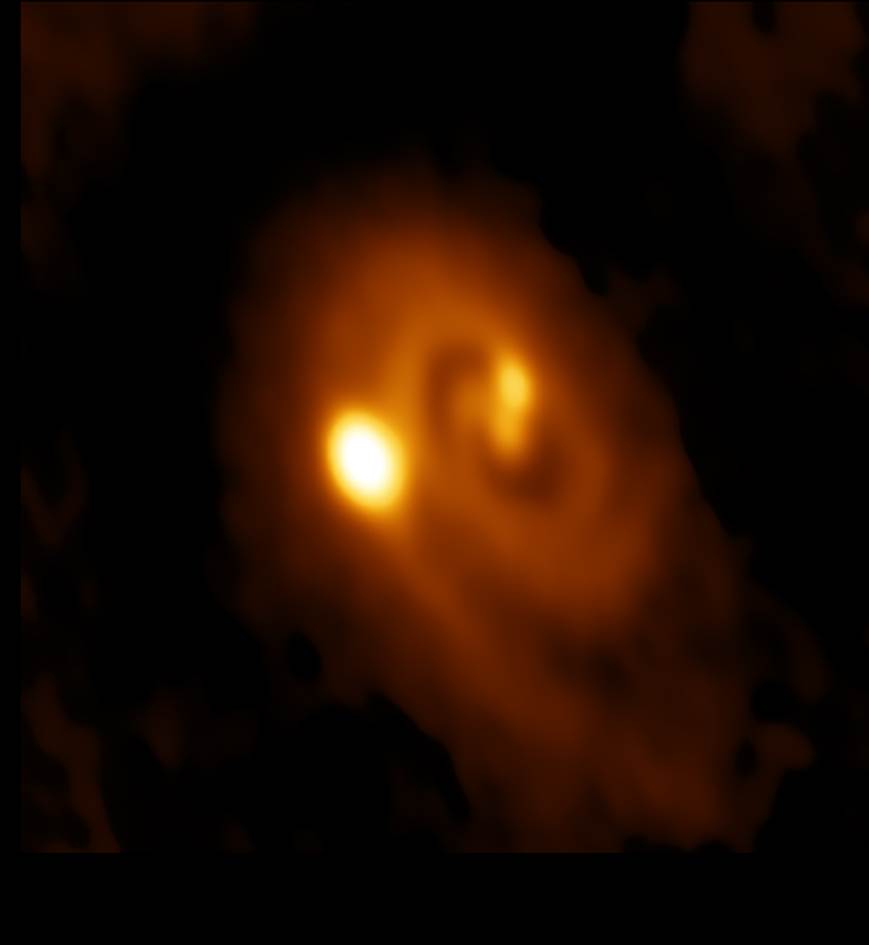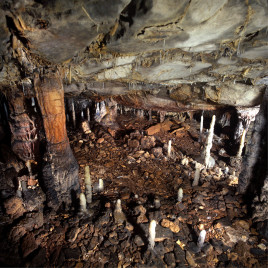
The outermost “arm” of the spiral indicates a recent shift in gravitational stability around the young stars. (Photo credit: B. Saxton: NRAO/AUI/NSF; ALMA (ESO/NAOJ/NRAO)
Half of all stars that are similar to the Sun in the center of our solar system have at least one companion. There are two leading theories explaining why stars form in multiples, and a recent study provides further physical evidence to support one of those theories. The evidence comes in the form of high-resolution images of a young protostar system—a group of stars in their early years, still building up its mass from the molecular cloud surrounding it. Researchers observed a spiral arm in the protostellar disk, where the third, previously unseen star is observed. According to the study, the spiral structure is a sign the protostar system has recently undergone gravitational instability, and the third star was formed as the result of that instability.
Authors:
John J. Tobin, Kaitlin M. Kratter, Magnus V. Persson, Leslie W. Looney, Michael M. Dunham, Dominique Segura-Cox, Zhi-Yun Li, Claire J. Chandler, Sarah I. Sadavoy, Robert J. Harris, Carl Melis & Laura M. Pérez
Corresponding author:
John Tobin, University of Oklahoma, Norman, Oklahoma, United States
Original paper published in Nature on October 26, 2016.


